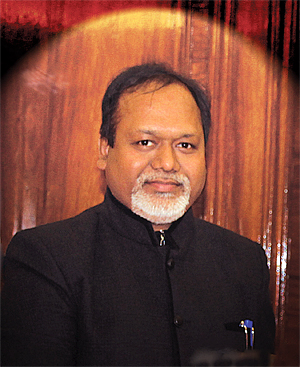From the Editor-in-Chief

Dear Readers,
The Director General of the International Business Aviation Council (IBAC), Kurt Edwards, in an exclusive interview with us, has candidly stated that business aviation is less familiar to government officials and regulators than commercial, scheduled air transport, and, as a result, the sector is constrained by inappropriate policies and regulations in India and elsewhere.
So this calls for continuous engagement and constant lobbying with the government, first to get them to understand of the importance of business aviation to economic growth. It is for the Business Aircraft Operators Association (BAOA) to inform the government on the requirements for the sector to grow, to make business aviation more visible such that there would be reasonable policy and regulatory framework in place.
The BAOA Managing Director, R.K. Bali, in an article has said that the non-scheduled operators (NSOP) aircraft would be the main source for immediate launch of the Regional Connectivity Scheme (RCS). However, he hoped that like the way the International Civil Aviation Organisation (ICAO) does not distinguish between different types of commercial operations and professional regulators around the world make proportional regulations for commercial operations based on type, size, passenger capacity and area of operation, India too would follow suit.
The recent comprehensive report on the business aviation scenario in India is an eyeopener. The BAOA President, Jayant Nadkarni, has hoped that it would “become a reference book that people would like to pull out and read, repeatedly, and act on it.” The government is seized of the role of business aviation, although this message clearly needs to become allpervasive across departments and ministries and show in results.
In this issue, we have focused on safety aspects, key to the growth and sustainment of business aviation. Air Marshal B.K. Pandey (Retd) opines that in any aviation activity, be it scheduled airlines or business and general aviation, safety of the aircraft and its occupants remains the primary concern for all operators. In another article, A.M. Ganapathy has highlighted how IS-BAO (International Standard for Business Aircraft Operations) as a safety standard is rapidly gaining acceptance globally by civil aviation regulators.
Also we have inputs by Kani Saritas of Jet Aviation which has tied up with an Indian company to help build synergies to serve the Indian market, particularly ensuring extension of life-cycle and safety of aircraft. Similarly, Michael Dupuis of Rockwell Collins ARINCDirect explains in detail how the company specialises in ‘office in the sky’ solutions even as more and more executives are travelling in business aircraft.
Happy reading!
J. Baranwal
Editor-in-Chief





